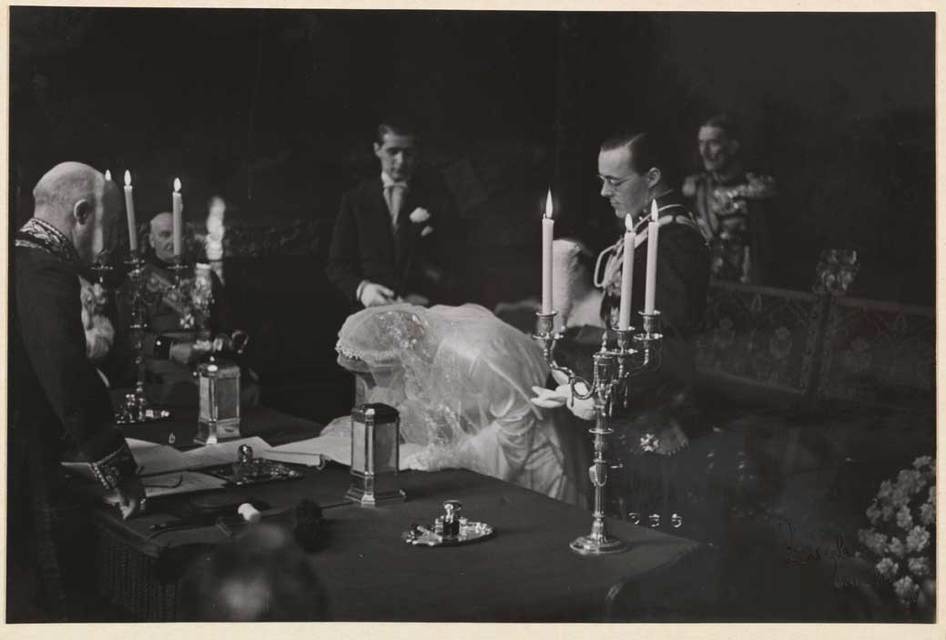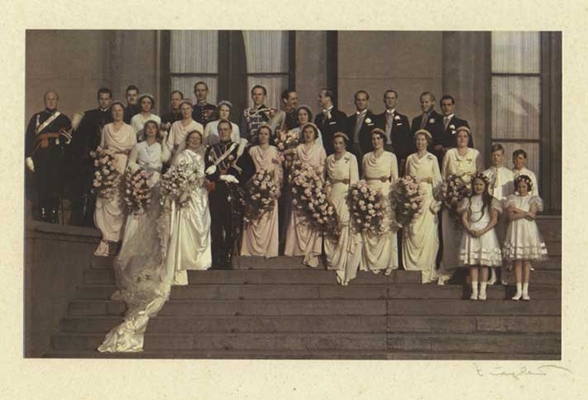On a cold, January day in 1937, a happy young couple stepped out into the chilly air to make royal history. Princess Juliana of the Netherlands married Prince Bernhard of Lippe-Biesterfeld before a royal guest list and surrounded by thousands of her fellow Dutch citizens who had come to share her special day. But this was more than just a royal wedding. Juliana was then heir to the throne of the Netherlands, waiting in line behind her popular mother, Queen Wilhelmina. A female heir to a queen regnant was virtually unheard of at the time and Juliana’s wedding proved to be ground breaking in more ways than one.

For a start, the bride had been rather selective about her groom and resisted pressure to wed despite the rather slim line of succession to the Dutch throne. Born in 1909, Princess Juliana had reached the then rather advanced age of 26 when she finally found the man she wanted to marry. Bernhard, two years her junior and a rather minor royal in the grand scheme of things, caught here eye when they met at the Winter Olympics in Bavaria in 1936. Within months they were engaged and making wedding plans. They chose a special date for their marriage – January 7th, the date that Juliana’s maternal grandparents, King Willem III and Queen Emma, had married in 1879. Exactly 58 years later, Juliana and Bernhard appeared before cheering crowds in The Hague for their own wedding. As Dutch law dictates, they first married in a civil ceremony which was held at the Town Hall. The groom was made a Prince of the Netherlands on his wedding day and changed the spellings of his name to the Dutch versions.

The couple travelled to their religious ceremony together, in a gold and glass coach. On their arrival at the Great Church, also known as St. Jacob’s Church, they walked into the ceremony together to be greeted by the Court Chaplain, the Rev. Dr. Worter, who had baptised Juliana and would now oversee her marriage. Juliana and Bernhard exchange vows in front of a huge congregation. But the hundreds gathered inside the historic building heard a different version of the marriage service as the bride, a queen in waiting, didn’t promise to obey her husband.

Princess Juliana turned to a local fashion house for her wedding dress. Maison Kuhne of The Hague was given the task of dressing a future monarch for her marriage and came up with a modern take on a classic theme. The gown, made of ivory satin, was draped in a classic Greek style while Juliana’s train measured around eighteen feet. There were also nods to her new husband’s family in her bridal outfit. The tulle veil was embroidered with silver roses and held in place by diamonds shape to represent the five petalled rose of the House of Lippe-Biesterfeld.

This was a very modern royal wedding and there was another unusual touch. The bridesmaids wore different pastel shades to represent the colours of the rainbow as Juliana felt this would represent happiness. There were certainly plenty of people keen to celebrate with her. One newspaper put the crowds in The Hague for the wedding day at over a million while cafes had stayed open the night before the marriage to accommodate all the people descending on The Hague.
Juliana and Bernhard went on to have four daughters together before, in 1948, she became Queen of the Netherlands on the abdication of her mother, Wilhelmina. Juliana reigned for thirty two years before stepping aside for her own first born, Beatrix. She died on March 20th 2004 and her husband passed away just nine months later. They are buried together in Delft.

